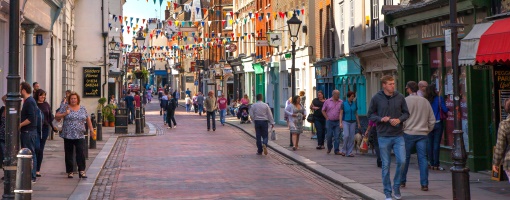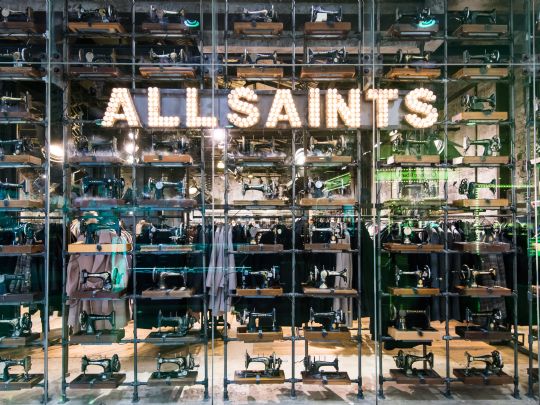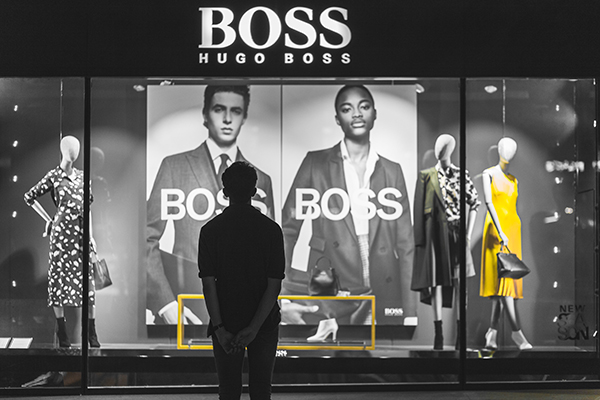Stores are an asset, not a liability - despite the recent trend for retailers to reduce their bricks and mortar footprint - according to the chief technology officer at Sainsbury’s and Argos.
Speaking at the eTail Europe conference, George Goley also argued that the staff that work at those stores should also be viewed as an asset, rather than something to be downsized when trading is challenging.
“In the UK particularly, people like to come in and pick something up… they like to speak to Jane or Bob on the shopfloor, especially when staff are equipped with good tech to help customers,” he stated.
His comments come as it is still unclear what changes will occur from the agreement to combine Sainsbury's and Asda.
The deal will create one of the UK's leading grocery, general merchandise and clothing retail groups, with initial promises to maintain both the Sainsbury's and Asda brands, but combine the network of more than 2,800 Sainsbury's, Asda and Argos stores to create more store formats and channels.
At an evidence session of the Environment, Food and Rural Affairs Committee today, MPs warned the proposed merger would reduce consumer choice, with one calling the idea the two brands can continue to operate separately “a load of baloney”.
Asda chief executive Roger Burnley responded that the company would “absolutely continue to operate as two separate brands”, but committee chair Neil Parish fired back that “if you’re going to make anywhere near 10 per cent in a hugely competitive market, you’re going to take the model of the cheapest buying – don’t come in here and give us a load of baloney.”
Burnley said the retail landscape had “changed out of sight”, with supermarkets now facing competition from discount retailers like Lidl, as well as online retailers such as Amazon. “We absolutely know that we can’t afford to stand still,” he added.
The Competition and Markets Authority’s consultation into the deal noted: “A number of submissions raised concerns about the impact of the proposed merger at the national level, on the belief that it would lead to increased concentration in the market and fewer national players, with two companies – Tesco and the combined Sainsbury’s/Asda – holding high market shares.”
Asked to explain how the retailers he works for have moved from tech-supported to tech-driven businesses, Goley revealed that Argos has gone from completing just six per cent of its transactions online in 2012, to over 60 per cent today.
“Argos is now the third largest UK retail website, behind Amazon and eBay, purely because it has become better than its competitors. We give great digital experiences and have the best distribution network in the UK,” he commented. “We compete with the likes of Amazon by having a better solution for the UK customer – they have to bill for a global customer, so that’s something we’ve taken advantage of.
Goley admitted that he had no idea whether the strategy of putting Argos branches into Sainsbury’s stores would work so well and also expressed surprise at the enduring popularity of the Argos catalogue.
“We print 18 million catalogues, so they’re not going anywhere. I thought they were an anachronism, but people love them and are vocal about it. That’s what you want though, if people are angry at you, there’s something you can do to make them happy, what you don’t want is an audience that’s indifferent,” he told the audience.
The catalogue will continue then, although Goley promised it would shrink in size, with additions like QR codes and pricing guarantees between offline and online.
In April, Argos started a search for 150 permanent technology and digital specialists to support its growing digital business and make shopping more convenient for customers. Chief executive John Rogers explained that around 60 per cent the company’s business starts online and over 70 per cent of those sales are on mobile devices.
Latest News
-
Walmart partners with OpenAI for direct purchases in ChatGPT
-
H&M boosts circular fashion strategy with new recycled polyester
-
Kingfisher to accelerate automation and AI across IT operations
-
Pingo Doce integrates AI platform to boost merchandising and CPG collaboration
-
Co-op warns UK could lose 60,000 small shops and 150,000 jobs
-
HelloFresh partners with Checkout.com
Supermicro and NVIDIA’s AI Solution for Retailers
To find out more: click here
Beyond Channels: Redefining retail with Unified Commerce
This Retail Systems fireside chat with Nikki Baird, Vice President, Strategy & Product at Aptos will explore how unified commerce strategies enable retailers to tear down these barriers and unlock new levels of operational agility and customer satisfaction.
© 2024 Perspective Publishing Privacy & Cookies










Recent Stories